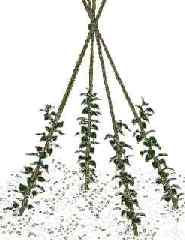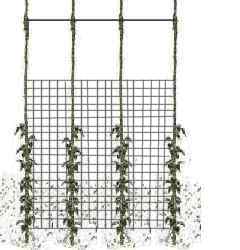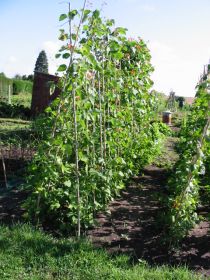Research made by members of the Council of Consumer Affairs State of Sabah has been found that most of the vegetables sold in the market for local consumers are not given identification tag. Identification tag or label is a measure used to ensure that vegetables are produced to meet the minimum standards of health and also as a way to monitor the use of materials of pesticides by vegetable producers. Currently, the only vegetables locally exported only given a temporary identification tag vegetables marketed to local consumers is not so. Vegetables sold in supermarkets, market stalls and not given the tag identification. The absence of the tag identification is difficult for authorities to ensure that minimum health requirements for 1985 full of vegetables.
In principle, all vegetable growers are required to register with the Department of Agriculture, Sabah. It is important to do so that each vegetable growers are given the code by the Department for the purpose of monitoring. Currently, the majority of vegetable growers who are registered to export vegetables because this is the prerequisite for export. Vegetables that are not given identification tags are not allowed to be exported. But will need identification tag is not yet enforced the grower-local vegetable growers.
Department of Health took samples of vegetables at random from the vegetable gardens, markets and supermarkets to test the residual insecticide. Recently, the Department has claimed that the owner of supermarkets in Kota Kinabalu for violating the Food Control Act 1985 for selling vegetables containing high residual insecticide that (Daily Express, 3.9.00). If the vegetables sold in local markets given the tag identification, the Health Department can also detect and fine-grower vegetable growers who use pesticides excessive.
Vegetables that contain levels of residual insecticide that proved to be higher in the statistics obtained. In 1999, four vegetable exporters from Sabah was found to export vegetables that exceeds the Maximum Level Waste (MRL) (Source: FAMA). Research Branch Department of Agriculture has also found that 10.4% of the vegetables imported from Sabah found exceeding MRL in 1998. MRL high levels found in 75% of the total sample of Chinese celery leaves, 50% chai sim (mustard flowers), 40% chilli (capsicum), eggplant 20%, 25% spinach (spinach) and 15.6% Chinese cabbage. Statistics in 1998 from the Department of Health also found that the insecticide is exceeded MRL for vegetable oil, bitter mustard, mustard flowers (Chai Sim), fragrant beans, spinach, mustard Taiwan, leaves "Sadri", cilli, horseback, coriander leaves (Chinese celery ) and spinach white. Statistics from the Department of Statistics showed that 21% of vegetables, low soil samples taken between January and May 2000 had levels of waste pesticides exceeding the MRL EBDC, according respectively.
Following this discovery, there is urgent need to improve the quality and level of security glassy-vegetables produced in the state. Control of pesticides must be tightened because of dietary vegetables that contain residual pesticides harmful to the user community in the long term. Furthermore, the image of vegetable products in Sabah will be contaminated local market and if there is no guarantee from the authorities that vegetables produced here have a high quality and meet the minimum health standards.
As a rare start, it is proposed that the test results of samples for a variety of vegetables made by the authorities published in local newspapers or the appropriate website. This is not only useful information is important to realize as a consumer but also pressure to vegetable producers to be more careful and responsible in the use of pesticides in their activities.
At the same time, more service connections (extension services) is required to educate growers about the vegetables in an integrated management of pesticides and other methods that is safe in their production process. It is also necessary to ensure that pesticides are prohibited (banned Pesticides) for vegetables stopped immediately. In fact, there has been awareness among consumers to switch to organic vegetables safer. The relevant authorities can promote organic farming by providing more assistance to vegetable farmers.
Based on Department of Agriculture, the cost to test a sample of vegetables is very high. Therefore, it is necessary to improve the provision of vegetable samples for testing to ensure that the sample size studied enough. Total staff in the Department that runs the test sample is added to vegetable also more frequent testing can be done at the farms, wholesale and retail markets and export door. We must ensure quality and safety of vegetables for the health of consumers before we go further promote the market for exports.






 The most attractive form of support is a wigwam - four or five bamboo canes tied together at the top will be sufficient. The growth at the top will be a bit crowded, but this structure will still produce a good crop of beans.
The most attractive form of support is a wigwam - four or five bamboo canes tied together at the top will be sufficient. The growth at the top will be a bit crowded, but this structure will still produce a good crop of beans.






 In general:
In general: Sauces or seasonings can add calories, fat, and sodium to vegetables. Use the Nutrition Facts label
Sauces or seasonings can add calories, fat, and sodium to vegetables. Use the Nutrition Facts label At meals:
At meals: Order a veggie pizza with toppings like mushrooms, green peppers, and onions, and ask for extra veggies.
Order a veggie pizza with toppings like mushrooms, green peppers, and onions, and ask for extra veggies. Add color to salads by adding baby carrots, shredded red cabbage, or spinach leaves. Include in-season vegetables for variety through the year.
Add color to salads by adding baby carrots, shredded red cabbage, or spinach leaves. Include in-season vegetables for variety through the year.  Vegetable tips for children:
Vegetable tips for children: Keep it safe:
Keep it safe: